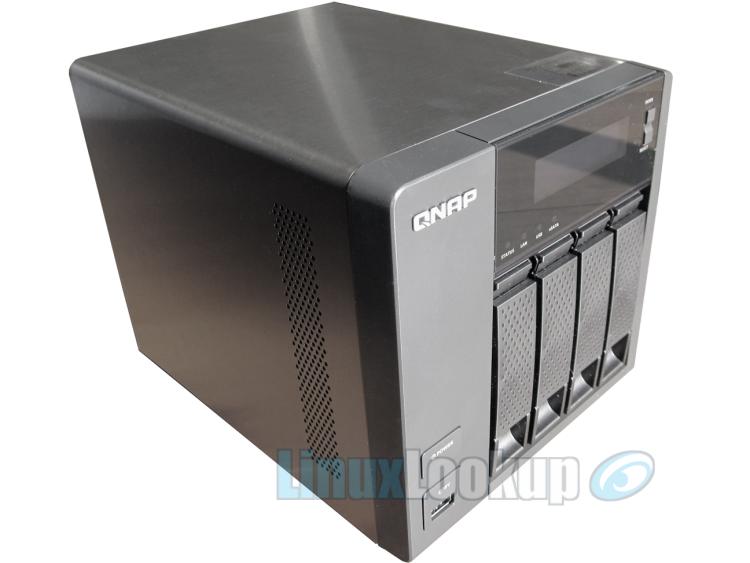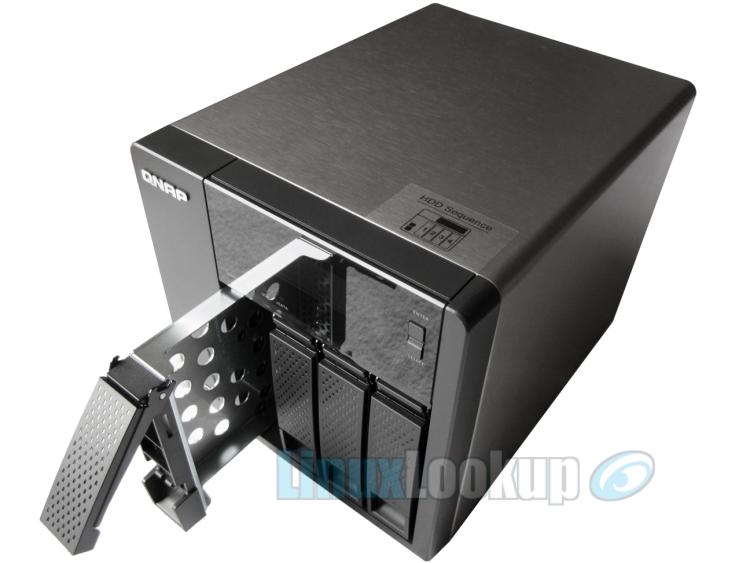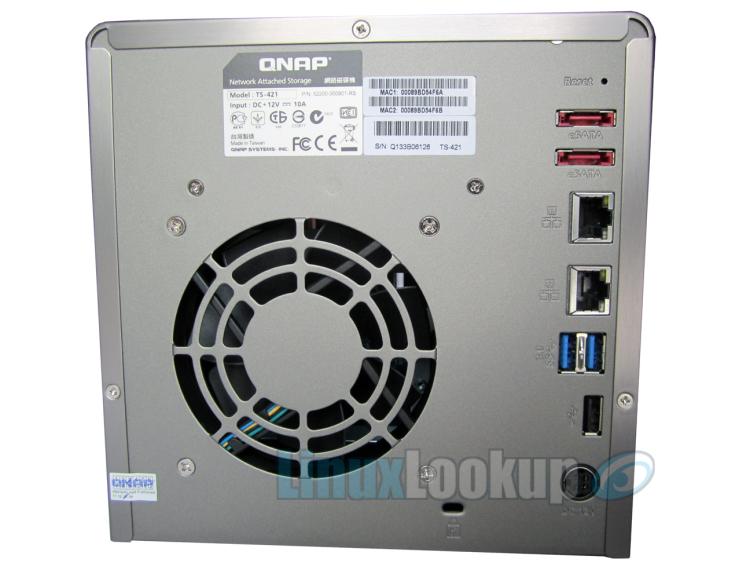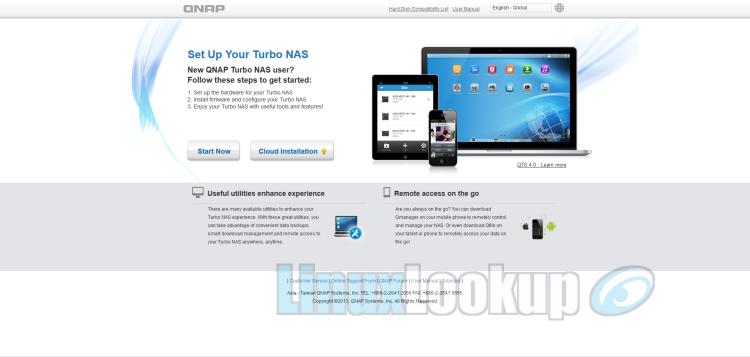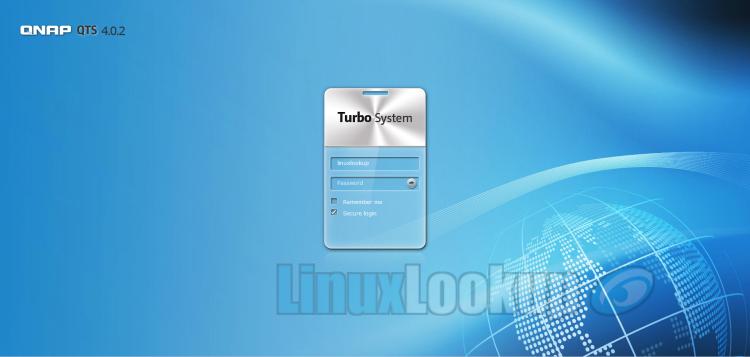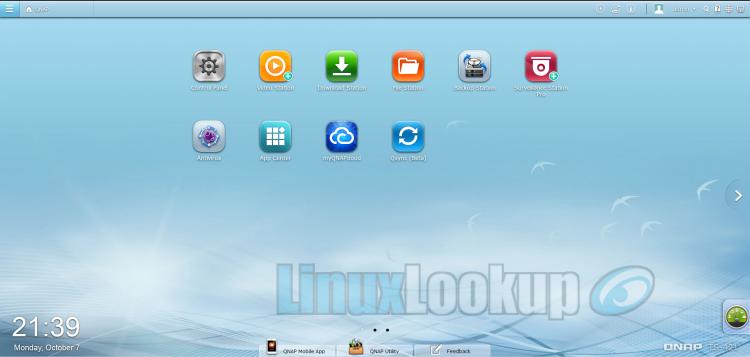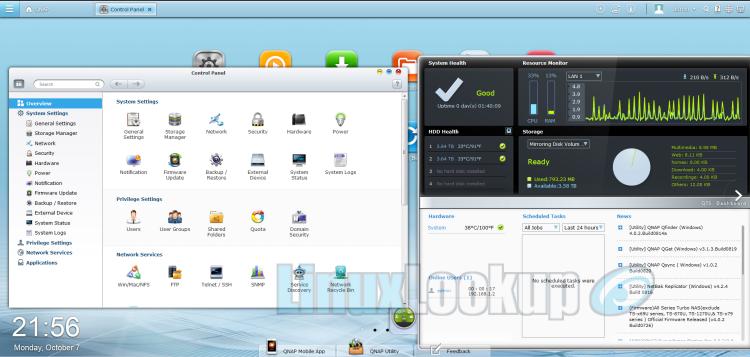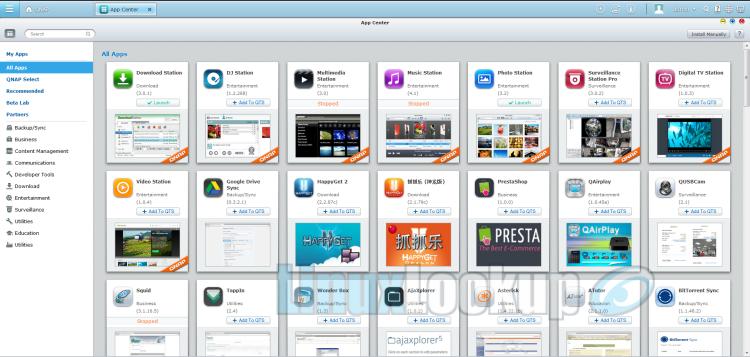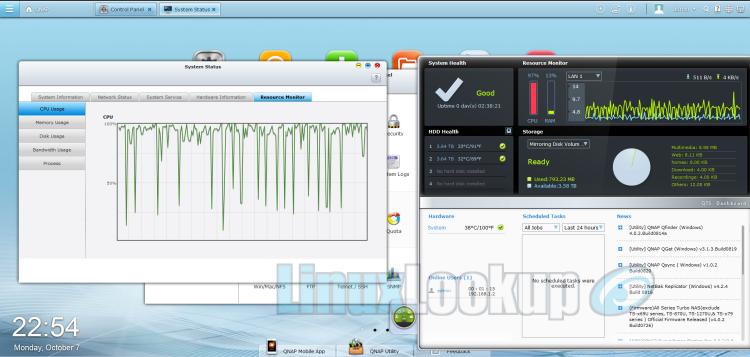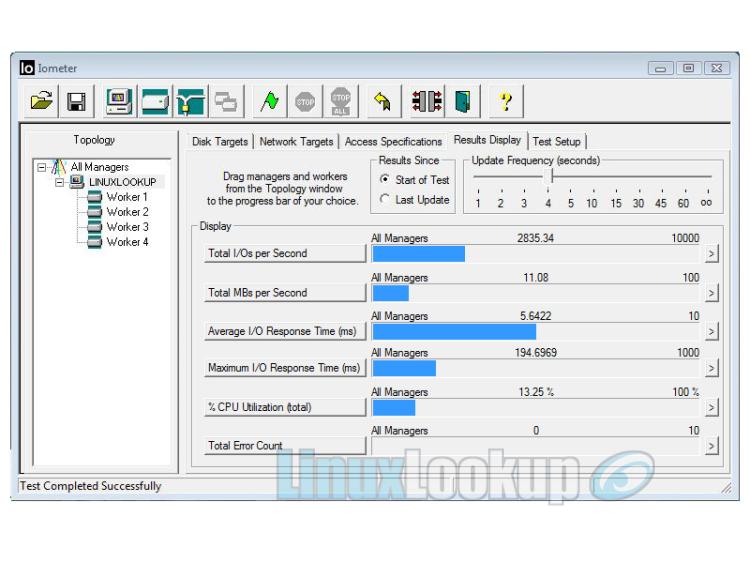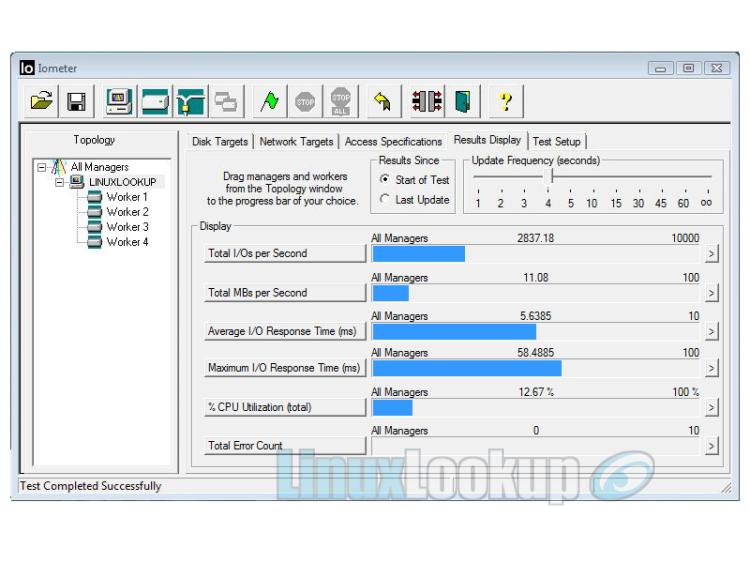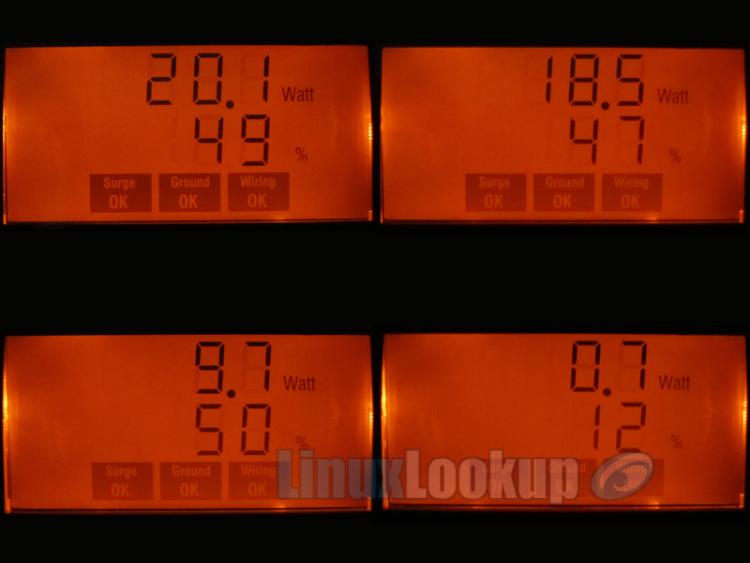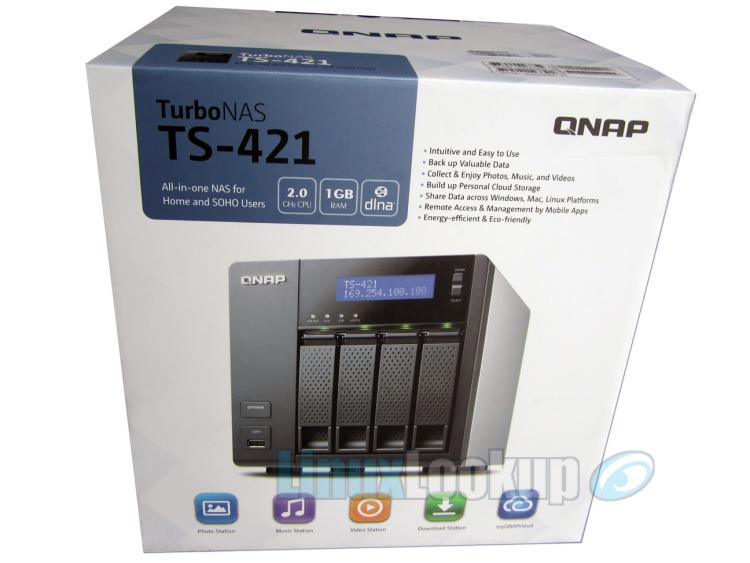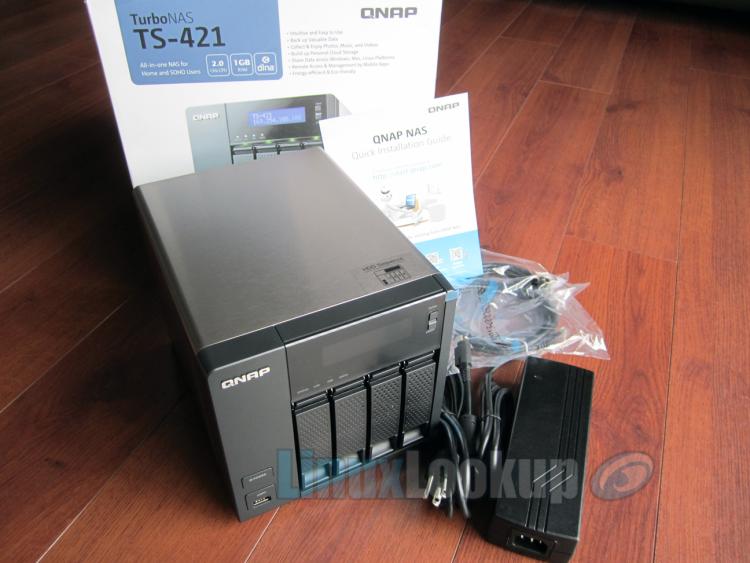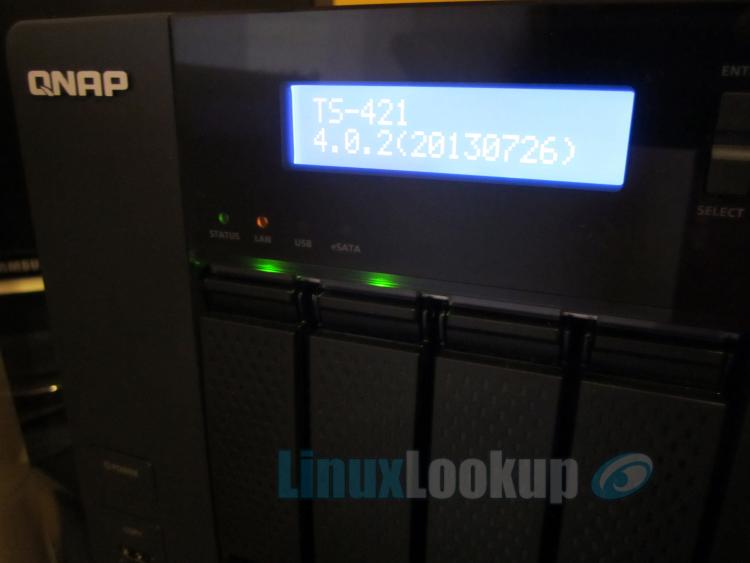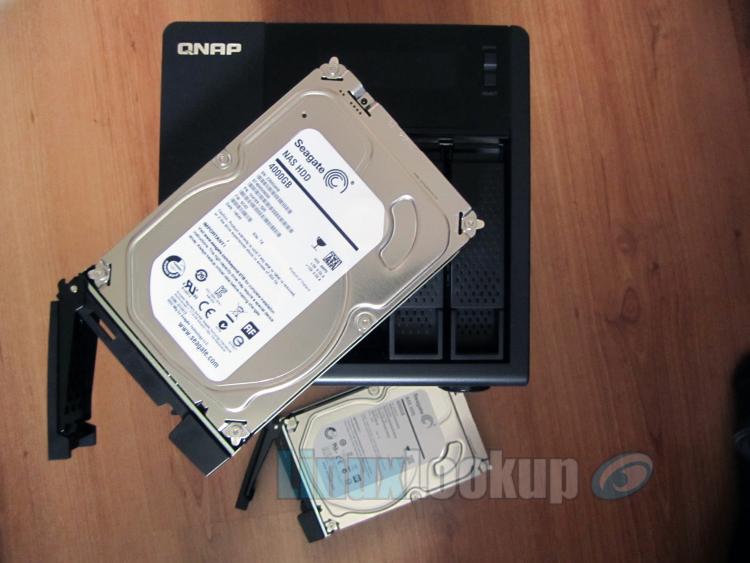QNAP TS-421 NAS Review
There was a point in time where Network Attached Storage (NAS) devices were overly complicated and complex enough to require a Network Administrator. But thanks to companies like QNAP, data storage, backup, synchronization, remote access, and personal cloud has never been easier.
Well-known for their storage solutions, QNAP manufactures some of the most user centric and competitively priced devices on the network appliance market.
Today we are taking a closer look one such device, the QNAP TS-421. This 4-bay NAS represents a mid-tiered model in QNAP's personal and small to medium business product line.
Features
Here are some highlights:
- Linux Desktop like administrative interface
- Supports Single Disk, JBOD, RAID 0, 1, 5, 6, 10, 5 + Hot Spare
- Domain Authentication Integration
- Access and manage files remotely
- App Center with 90+ free applications
- Built in ClamAV (AntiVirus)
- Server Virtualization & Clustering
- Cloud Service
- File, Music, Photo, DJ, TV and Video Station
- BitTorrent Application
- FTP, VPN, Web, Log, Print, iTunes and RADIUS Server
- Surveillance Station Pro
- Multilingual Support
- Supports dozens of Network Protocols
- iSCSI (IP SAN)
- 2 Year Limited Warranty
Hardware
TS-421 is one of five products in the QNAP TS-4x Series, all of which are 4-Bay storage appliances targeting personal and small to medium business market segments. With slight variations in hardware features and specifications, the line-up includes TS-412 ($359), TS-420 ($429), TS-419P II ($479), TS-421 ($499) and TS-469L ($646). In comparison TS-421 appears to offer best value by bearing more memory and faster CPU over lesser TS-4x models, and an LCD display or $150 cheaper price tag than the higher end Dual-Core TS-469L.
The TS-421 is a four-bay chassis supporting maximum raw capacity of 16TB with front facing hot-swappable disk trays and a backlight Mono-LCD display that can display basic configuration settings, array status and power options. Frontal features also include LED status indicators, power button, one touch copy button and a single USB 2.0 port. Internally a Marvell 6282 High-performance single-core 2.0GHz CPU and 1GB DDRM RAM are present for computing.
On back of the enclosure are 2 eSATA ports, 2 Gigabit LAN ports, a 90mm fan, 1 USB 2.0 and 2 USB 3.0 ports. Overall the housing is physically sturdy and well constructed from quality parts and materials. Supplied is an external power adapter rated at 120W. The advantage to this is a reduction in temperature for both the housing and drives, also it allows the PSU to easily be replaced in the event of failure.
Specifications
Hardware
- Marvell 2.0GHz CPU
- 1GB DDR3 RAM
- 16MB Flash
- 4 Hot-Swappable Trays, 3.5" or 2.5” SATA II HDD/SSD
- Maximum raw capacity: 16TB
- 4 Hot-Swappable Tray
- 2 Gigabit Ethernet Ports
- Backlight Mono-LCD Display
- External power adapter (120W)
- 2 x USB 2.0 port (Front x1; Back x1); 2 x USB 3.0 port (Back)
Note: Common to this type of NAS, hard drives are not included and need to be purchased separately. I'd highly recommend using Seagate NAS Hard Drives which provide the best-performing, highest-capacity storage for 1- to 5-bay NAS systems and are fine-tuned for the needs of small NAS systems.
Setup & Configuration
QNAP has simplified the installation process in getting rid of printed manuals and instructional CDs by instead directing you to a web portal for online setup. Admittedly, at first I was rather skeptical of this "online setup" as it suggests Internet connectivity is required to even initialize the device. But my assumption was incorrect, online setup is merely a few web forms which assist in finding the correct documentation for your QNAP model and walks you through physical hardware installation, firmware installation and fundamental setup.
A caveat in this setup process is that it advocates installation of an application named QFinder. My attempts to run the Linux version of QFinder on both Debian 6 (Squeeze) and Debian 7 (Wheezy) failed. The installation documentation refers to a package that does not exist in Debian repositories, so rather waste time trouble-shooting or trying to meet QFinder dependencies, I choose to bypass the application all-together and complete setup by connecting directly to the administrative interface.
To access this interface, launch your favorite web browser and navigate to the LAN IP address. By default TS-421 uses DHCP, so an address should already be assigned to the NAS. If you're stuck, this information can be verified using the Mono-LCD display. Intended functions of QFinder are to locate the NAS by executing a discovery on your LAN and assist in configuration. This is great for novice users, but others may consider it an unnecessary extra step, so choosing not to install the application will have no negative repercussions. Identical config tasks can be accomplished within NAS Operating System (QTS 4.0) web interface once logged in.
Software
You should not focus solely on hardware specifications when choosing a small office, home office, personal NAS. Quite often hardware within these types of devices is very similar in comparison. The real differentiator which sets NAS manufactures apart from one another is software. QNAP is a company that understands the importance of providing a simplified user experience and continual evolution of application functionality. QNAP TS-421 runs the latest version of their NAS Operating System, QTS 4.0. Built on a Linux foundation with an optimized Kernel, QTS 4.0 Turbo NAS Operating System delivers high-performance services, file storage, backup, multimedia applications and synchronization all within an intuitive multi-window user interface. This interface is comparable to a Linux Desktop, with three workspaces, application menus, transitioning effects, icon grouping, shortcut creation, window resizing, dragging and dropping all accessible from within a web browser.
The App Center extends functionality by offering a variety of applications for you to install on demand. Matter of fact, at the time of this review there are 93 free applications to choose from.
Admittedly I was overwhelmed with the amount of features and number of applications for QTS. It quickly became apparent that attempting to introduce them individually would far exceed the scope of this review. Unquestionably, QNAP has dedicated a lot of time & effort towards development of the QTS software. Interfacing has some superfluous duplication in areas, but is very user centric and simple to use. As a whole, my experimentation concluded no issues worthy of documenting and after a week of hands-on evaluation, it is with confidence I can advocate the QNAP TS-421 includes everything you'll need feature wise. Below I've linked to a YouTube video presentation which provides a high-level overview of QTS and multitude of features.
Note: QTS 4.0 Source is available under GNU General Public License version 3.0 (GPLv3).
Performance
All storage devices require an initial installation process which includes formating hard disk, partitioning and synchronization of redundant array of independent disk (RAID) if applicable. Often these operations are time consuming and slightly degrade performance while running. So, typically it is a good idea to initiate and leave until completed.
In this review I used two Seagate 4TB hard drives (Model# ST4000VN00) in a RAID1 (Mirrored set) array and as expected the process took several hours to complete. Results will vary depending on the RAID type, capacity and number of hard drives you choose.
Usually I wouldn't even mention the above process, but throughout initialization I experienced sustained CPU usage of around 97% on the Marvell single-core 2.0GHz processor. Noticeable performance latency was introduced for the entire duration of RAID1 synchronization. Certainly not a deal breaker, but anticipate a decline in performance if you continue with transactions while drives build.
Unless you frequently change RAID levels, or add/remove hard drives this shouldn't be an issue after initial installation takes place, all I'm saying is that the QNAP TS-421 could certainly benefit from a dual-core processor.
Iometer was used to test storage throughput over the network by dumping and pulling data from disks sequentially. Tests ran for 5 minutes and then again for 40 minutes to eliminate any skew due to caching. Both durations used 4 workers (CPU cores), an outstanding I/O (queue depth) of 16 and 41943040 sectors which equates to 20GB.
Access specification was set to 4K Block size, 100% Read with 0% Random. 100% sequential is best for maximum Input/Output Operations Per Second (IOPS) testing.
The three most important result indicators are Total I/Os per Second, Total MBs per Second, and Average I/O Response Time (ms).
Total I/Os per Second indicate the current number of operations occurring against our storage target and generally the higher the IOPs the better.
Total MBs per Second is a function of taking the number of I/O operations per second and multiplying them by the size of the file being written or read (Block size). This indicates the amount of data our storage target is reading per second.
Average I/O response time number increases as the number of outstanding I/Os the test is set to have increases. The two do not increase in a linear fashion and measuring the average I/O response time is a good indication of load handling.
The results are as follows.
5 Minute Results
40 Minute Results
Energy Efficiency
Our energy efficiency test measured power consumption under load at 20.1W, idle A at 18.5W, idle B at 9.7W and stand-by at 0.7W. For clarification idle A is under no active tasks. Idle B is under no active tasks and hard drives spin down (HDD standby).
Gallery
Conclusion
The Good - Pros- Linux Desktop like administrative interface
- Exceptional software features
- Active development on QTS software
- QTS 4 is released under GPLv3
- 90+ free add-on applications available
- Four drive bays supporting maximum raw capacity of 16TB
- Low power consumption
- Novice friendly & well documented help
The Bad - Cons
- QFinder didn't run under Deiban 6 or 7 (Can be bypassed)
- Easy to expend the single-core CPU
The Ugly - Issues
- N/A
The Verdict - Opinion
With a simplistic setup, intuitive web based user interface, abundant feature sets and considerable number of free add-on applications the QNAP TS-421 NAS is entirely capable of meeting storage demands of personal use and small to medium business.
